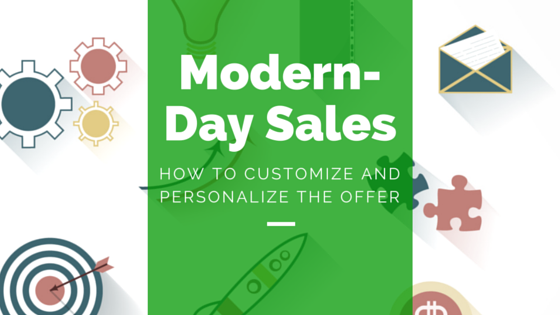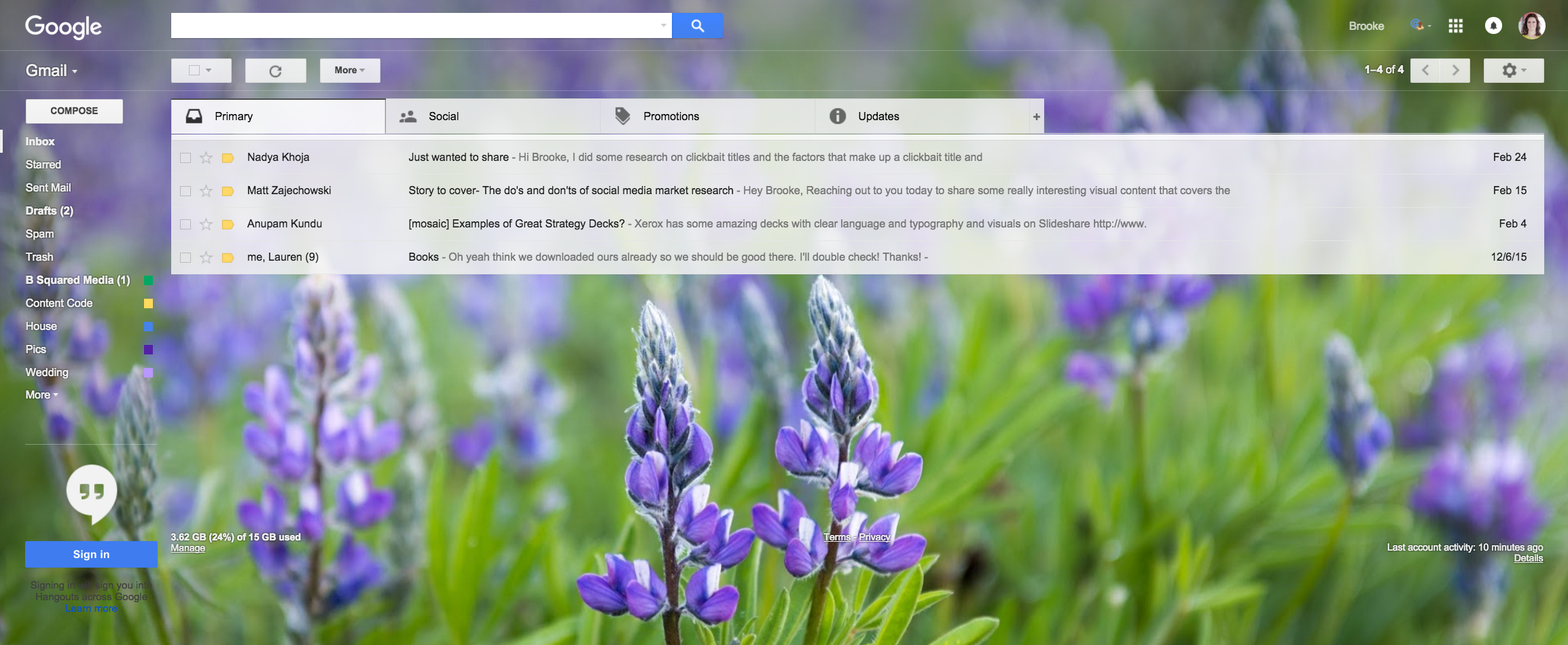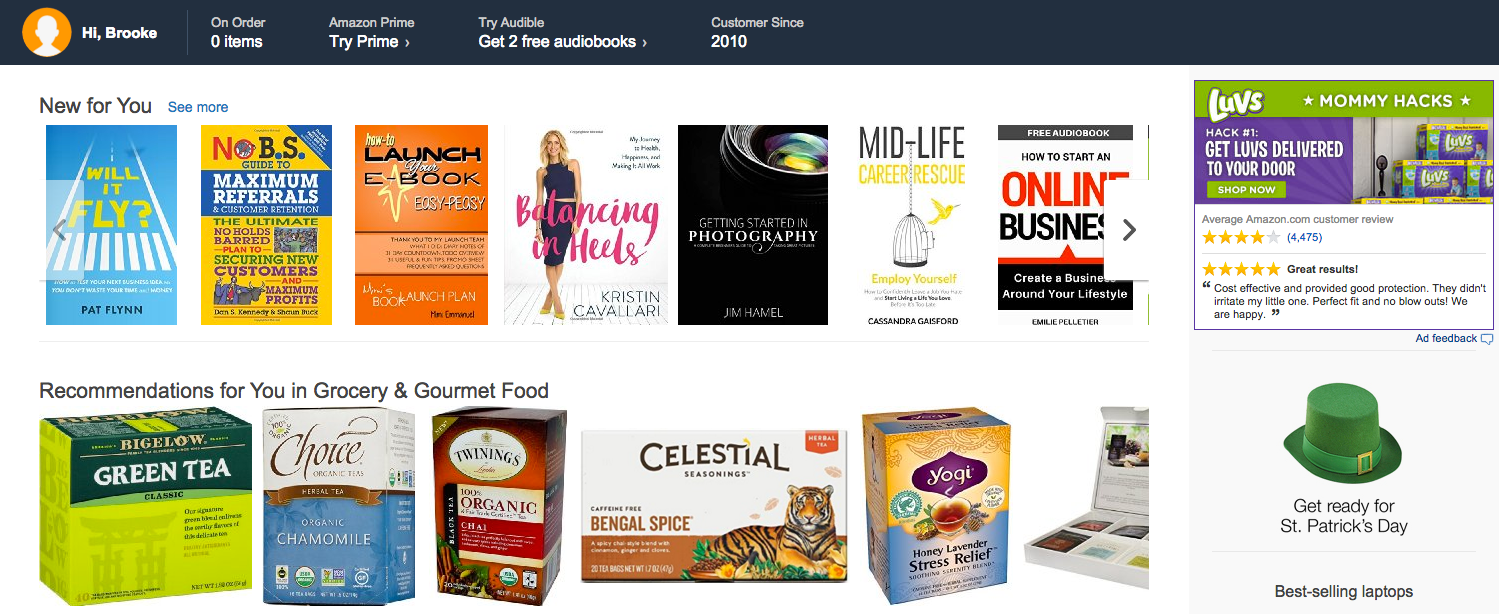Last year I had 19 kids and this year I have 13.
I’m teaching another semester of, “Customization and Personalization of the Offer” at Baruch College in NYC — it’s a class on consumer behavior where my students learn how to customize or personalize the offer.
“The offer” refers to anything you’re offering online, whether it’s content or items for purchase through e-commerce.
If you’re selling it, pitching it, or asking for something in return for it, it’s an offer.
Last semester I wrote about the difference between customization and personalization.
This semester I want to get clear on how and why you need to be doing this NOW.
Why Are Customization & Personalization So Important?
If you think about all of the things you’re probably already personalizing or customizing online it’s staggering:
- Calls-to-action
- Email openers
- Web pages
- Landing pages
- Opt-in forms
- Ads
- Drip sequences
There are two major reasons we so desperately seek out personalization or customization:
- Content shock, or information overload: We’re tired of being a dollar sign or avatar to businesses. With the consumer revolution in full swing, we want to be seen for who we are and get exactly what we want — not what you think we want.
- We want to be in control. Simple, right? Move over, I’ll do my own [shopping/purchasing/browsing/etc.] … thank you very much!
When you customize or personalize the offer, you’re fulfilling two deeply psychological needs that consumers have.
And when we’re talking about advertising, the ability to customize or personalize the offer is a must.
A study by the University of Texas tested 237 subjects and found the following …
“The results indicate that subjects do indeed perceive greater media enjoyment when exposed to a customized online environment as compared to a standard online environment. Additionally, subjects who were exposed to a customized media environment had greater behavioral intention for interacting with advertising.”
The modern-day sales landscape is vastly different, especially in online forums.
So how can you use customization and/or personalization to make your own offers more tantalizing?
Let’s break it down …
Critical Note: Personalization & Customization Are NOT The Same
Before we go any further, it’s important for you to understand the difference between customization and personalization.
Customization:
This is where YOU choose how you want things to be tailored to your specifics wants/needs.
Think about Gmail as the perfect customization example. I’ve customized my:
- Background photo
- Tabs
- Labels
- Colors
- Font sizes
I “told” Gmail which elements I wanted on my home screen, thus allowing me a more customized feel.
Customization is generic, like these features or other feature-level elements where you can pick or hide things you want to see/don’t want to see.
The above snapshot of my Gmail homepage should look different from yours … that’s customization hard at work!
Personalization:
Uses your behavior (like clicks or favorites) to learn what you like. It looks at your implicit interests.
A site nearly every person reading this blog has used that uses personalization very well is Amazon.
Or Netflix. Or most shopping sites.
Here’s a look at my homepage on Amazon … clearly I read a lot of marketing books and drink a lot of tea:
And under “recommendations for me” there are even more personalized items for me to browse.
Of course, as a buy new things (or add them to my list, cart, or favorites) Amazon’s personalized offers will change.
The trick is remembering that customization is set by you while personalization based on your behavior — like what you click — but NOT set specifically by you.
How To Customize Or Personalize The Offer
How can you be a Gmail or Amazon when it comes to customizing or personalizing your offers?
Remeber Coke’s ‘Share A Coke’ campaign where the cans had several different names on them?
I know what you’re thinking: It’s not easy to be a Gmail, or Amazon, or Coke.
But you can use those examples as jumping-off points.
When customizing your offer:
- Start by answering why. Do you really need to offer customization of your products to be successful? Will they be large, extremely detailed customizations or simple ones, like adding initials to their product purchase?
- Be strategic. Don’t just customize to customize. Instead, know what the benefits of customization are for your brand. Perhaps offering your widgets in customized colors will set you apart from your competitors, thus giving you a leg up in differentiating your brand. That’s strategy. Guessing or doing it “because” is not.
- Pay attention to UX. UX, or user experience, is critical when considering customization. Offer a simple and easy-to-use solution for your customers to customize their purchase.
- Don’t forget to highlight the social proof. Since your current (happy) customers are your best tools for recommendations, be sure you make it easy to share their customized product with their friends. This could be as easy as a social sharing option.
Use these 4 tips when customizing your online offers to consumers.
When personalizing your offer:
Personalization (in my opinion) is a lot easier because almost anyone can do it!
Here are four ways to personalize your offer:
- Email: use your email software to address the reader by name when at all possible.
- Use automation software to personalize future content based on behavior (or clicks).
- If you have an online store, enable software and tools to help you recommend similar products or highlight other items that are frequently purchased with the item a user is viewing.
- Use retargeting and remarketing to help personalize your advertising.
Use these 4 tips when personalizing your online offers to customers.
It’s not all about tech, either:
It may seem like small businesses can’t jump into modern-day sales and customize or personalize the offer without some sort of expensive technology or software.
But that’s just not true:
- You can easily use data like location, purchase history, and click behavior to send relevant, personalized emails
- You can let Google Analytics help you determine how to customize your content by looking at time on page, entrance and exit behavior, and referral traffic
As long as you’re truly interested in making customer-centric decisions with your marketing, learning to customize or personalize the offer is possible.
You just have to be in it for the long haul.
Have you already started adding customization and personalization tactics to your marketing and sales efforts? Tell us about them in the comments section below!


